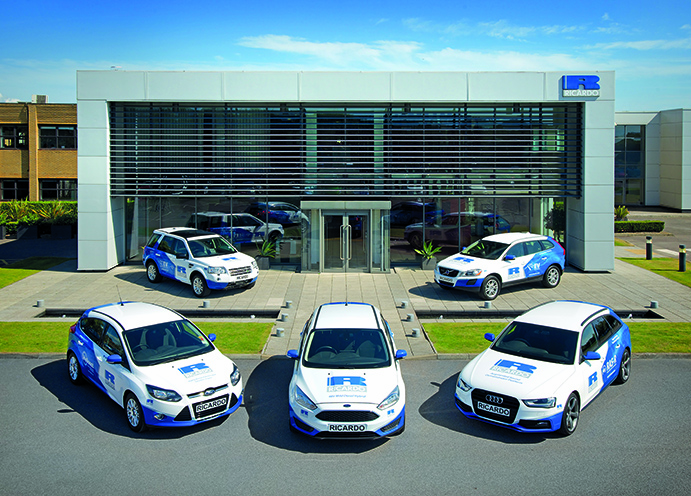Viewpoint
The government’s plans to end petrol and diesel vehicles on our roads will lead to low-emission autonomous vehicles and electrified powertrains, says Dave Shemmans
The announcement in July that the government plans to end the sale of all new conventional petrol and diesel cars and vans by 2040 grabbed the headlines. But for Ricardo, this is just the confirmation and continuation of a trend towards electrification that has been going on for some time. Fleet average fuel economy and CO2 targets, together with stricter real-driving emissions regulations, are already forcing the electrification of vehicle powertrains, with many electrified products selling fast in the showrooms.
With significant developments seeming imminent in battery technology and low-cost 48V hybrid systems, the passenger car powered only by diesel or gasoline – without any form of electrical regenerative braking or stop/start technology – will likely have retreated to niche applications long before 2040.
The imperative to reduce carbon emissions and improve air quality in our towns and cities provides the impetus for powertrain electrification of all types, but this is just one of the mega-trends affecting the design and engineering of future vehicles. In parallel with the march of electrification, autonomous vehicle technologies are being taken seriously by the world’s big automakers, as well as by the new entrants to the automotive ecosystem, such as Google and Tesla.

And with increasing technical complexity, there may well come a point where society begins to question the extremely low levels of asset utilisation represented by current patterns of ownership and use, which see private cars utilised, typically, for less than 5 per cent of the time. By 2040 it is more than probable that autonomous technologies will have changed all this, perhaps with greater use of public transport – including rail – being combined with the managed/shared operation of private cars. This concept of multi-modal interlinked transport may be as unremarkable by then as the presence of battery electric vehicles in towns and cities is today.
The government’s objectives for 2040 are laudable, although for Ricardo they merely restate a direction of travel in technological development and innovation that is already well established. At Ricardo, we have been building up our powertrain electrification and battery systems development capabilities for almost two decades, and using these skills to help customers develop the latest generation of low-carbon, clean technology vehicles while also pushing the state of the art forward to deliver the even cleaner and more fuel-efficient vehicles of the future. Moreover, we see the multi-skilling of our automotive teams – to incorporate knowledge of both electrified and conventional powertrain technologies – as enriching the experience and opportunities of staff. As engineers, we relish such challenges and it is often at the point where disciplines intersect that the best new ideas emerge.
And the car is just part of the picture – a single component in a wider system that provides societal benefits in terms of transportation, but brings with it challenges in terms of the environment, energy systems, and urban congestion. This is one of the reasons why today’s Ricardo global team includes an energy and environment division that employs some of the world’s leading experts on urban air-quality monitoring, and why the company assists with the planning, development and implementation of initiatives such as low-emission zones – initiatives that aim to deliver improvements in air quality based on today’s vehicle fleet.
Ricardo also offers expertise in the electrical power industries, and our energy practice assists generators, as well as grid and distribution network operators across the world – in the integration and management of renewable resources, for example. These teams are ideally placed to assist in the necessary network reinforcements and smart management technology that will likely be needed to support the recharging requirements of any mass take-up of battery electric vehicles. Our rail engineers too, being signalling system specialists, are able to contribute significant synergies to the work of our autonomous vehicle specialists. This is also true in the area of safety assessment, where the experience of our rail certification team is being brought to bear upon the key autonomous vehicle challenges of safety and customer confidence.
In essence, the clean, low- or zero-emission cars of tomorrow, offering autonomous driving capabilities and electrified powertrains, will need to be developed and deployed in a systemic manner that ensures higher levels of asset utilisation, cleaner air, more efficient use of energy, and lower traffic congestion. The linkages between these imperatives are something Ricardo has long understood, and it is why the company is more diverse in its customer and technology base than at any time in its history. By 2040, the vehicles on the highway will be one of many applications of engineering expertise that we will have helped to significantly improve.
Dave Shemmans is chief executive of Ricardo




Red Bull makes hydrogen fuel cell play with AVL
Surely EVs are the best solution for motor sports and for weight / performance dispense with the battery altogether by introducing paired conductors...